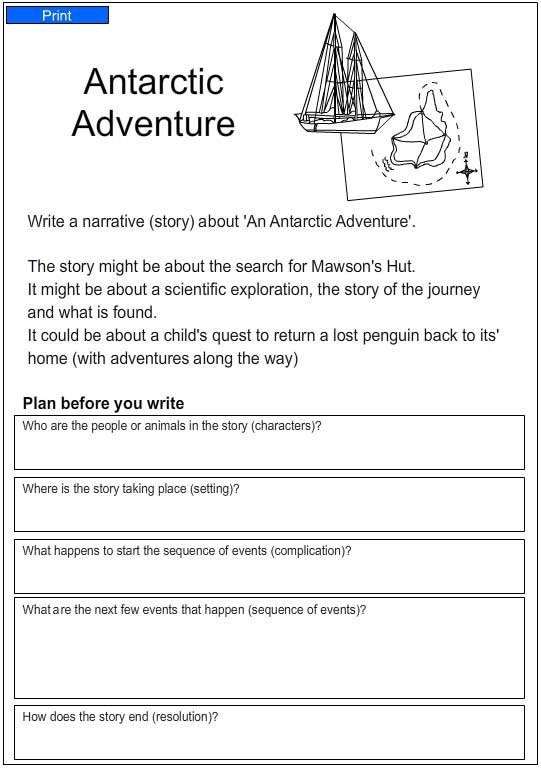Back
Antarctic Adventure
- Grade: Year 5
Activity type: Printable
To save results or sets tasks for your students you need to be logged in. Join Now, Free
Antarctic Adventure
- Course
English - Grade
Year 5 - Section
Writing - Outcome
Writing a Narrative: Antarctic Adventure - Activity Type
Printable - Activity ID
18013

